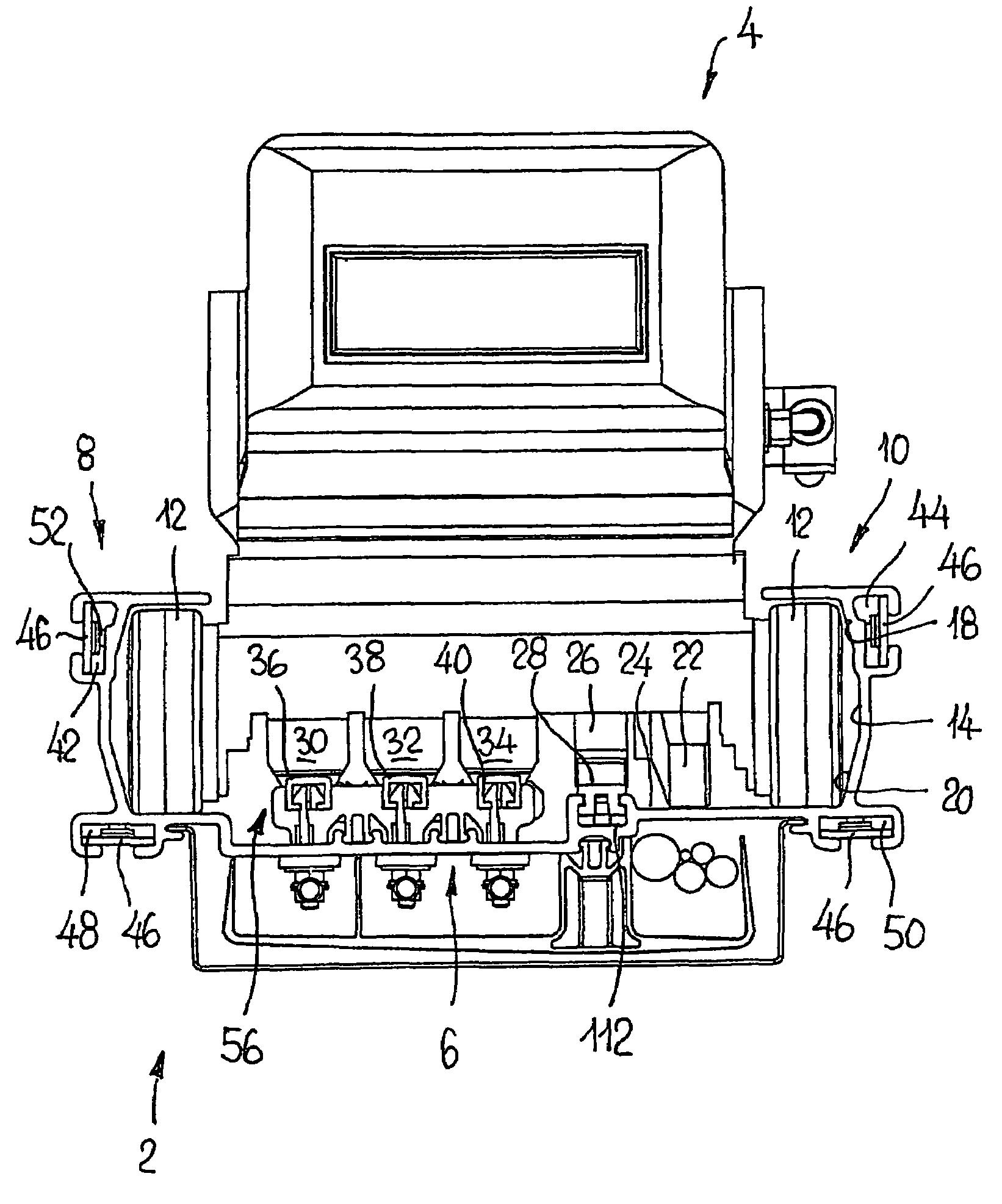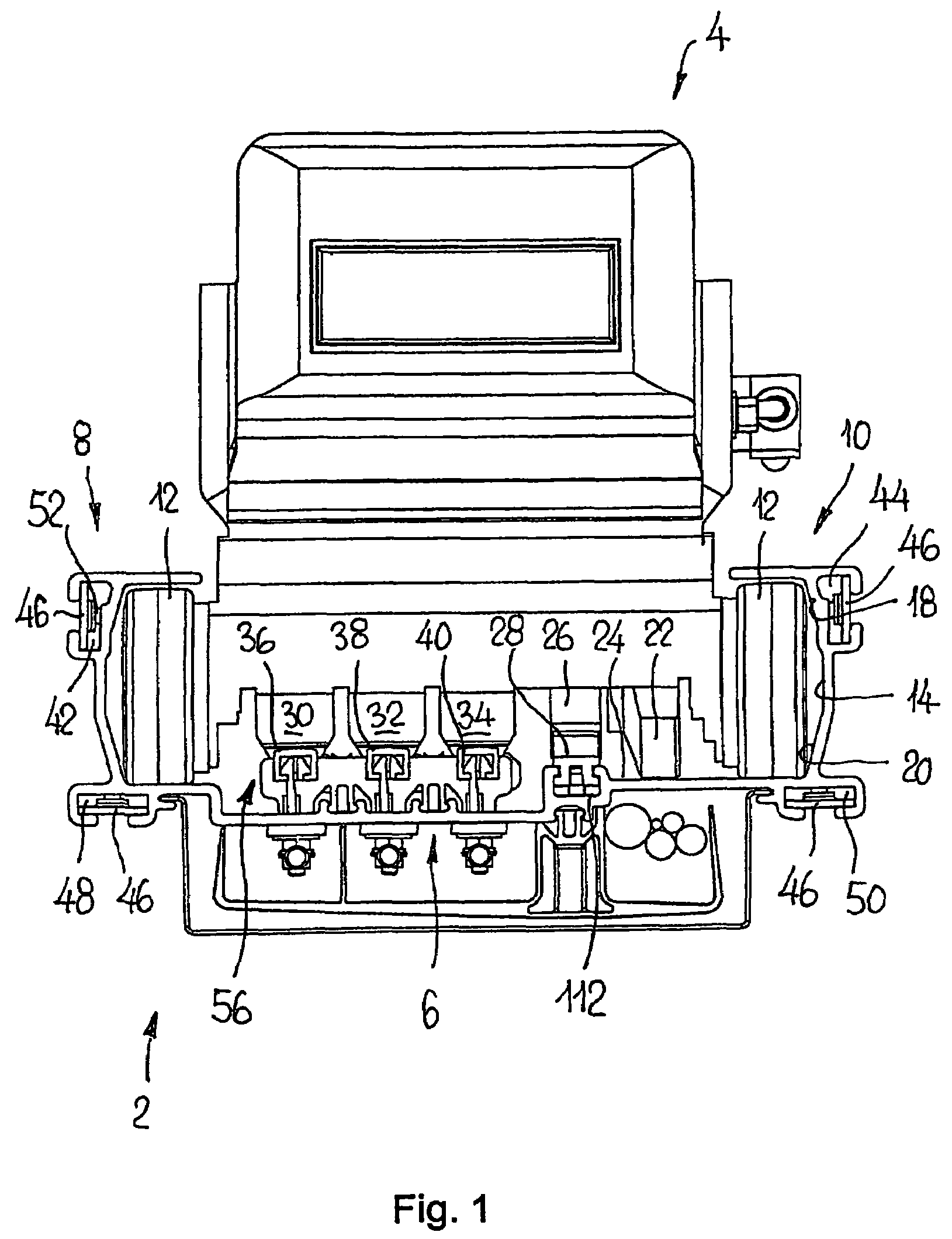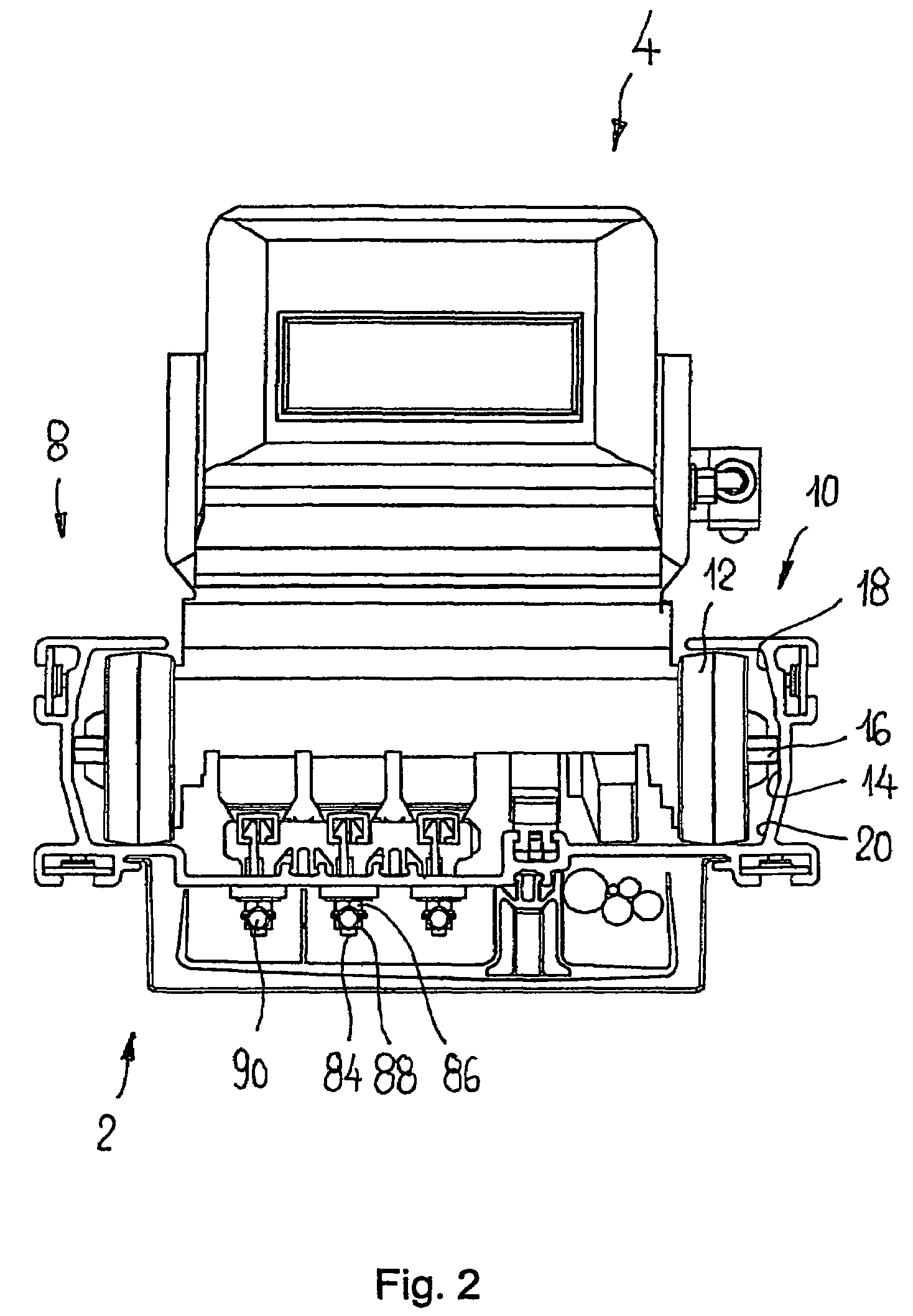Rail for self-propelled electric trucks
a self-propelled electric trolley and rail technology, applied in the direction of elevated railways, transportation and packaging, ways, etc., can solve the problems of affecting the safety of passengers, and the wheels of the trolley are relatively complicated and vulnerable, so as to facilitate mixed operation, reduce the bending of the sides, and load more heavily
- Summary
- Abstract
- Description
- Claims
- Application Information
AI Technical Summary
Benefits of technology
Problems solved by technology
Method used
Image
Examples
Embodiment Construction
[0024]FIGS. 1 and 2 show a cross section of a segment of a conveyor system that features rails 2 in which a self-propelled trolley 4 is arranged. One such rail 2 features a base part 6 and C-shaped sides 8, 10, which enclose the side wheels 12 of the trolley 4. The C-shaped sides 8, 10 each feature a central, outwardly displaced running area 14 for the lateral guide rollers 16 of the trolley, as well as upper and lower support surfaces 18, 20, each inclined towards the wheel 12. One and the same rail is thus suited for trolleys 4 that feature lateral guide rollers 16, as shown in FIG. 2, and for trolleys 4 without lateral guide rollers, but on which the wheels 12 simply abut the support surfaces 18, 20.
[0025]The wheels 12 and the guide rollers 16 are generally non-powered wheels or rollers without any drive function. Drive is provided on the one hand by a frictional wheel 22 functioning in concert with a corresponding frictional surface 24 of the rail 2, and / or a cog 26 functioning ...
PUM
 Login to View More
Login to View More Abstract
Description
Claims
Application Information
 Login to View More
Login to View More - R&D
- Intellectual Property
- Life Sciences
- Materials
- Tech Scout
- Unparalleled Data Quality
- Higher Quality Content
- 60% Fewer Hallucinations
Browse by: Latest US Patents, China's latest patents, Technical Efficacy Thesaurus, Application Domain, Technology Topic, Popular Technical Reports.
© 2025 PatSnap. All rights reserved.Legal|Privacy policy|Modern Slavery Act Transparency Statement|Sitemap|About US| Contact US: help@patsnap.com



